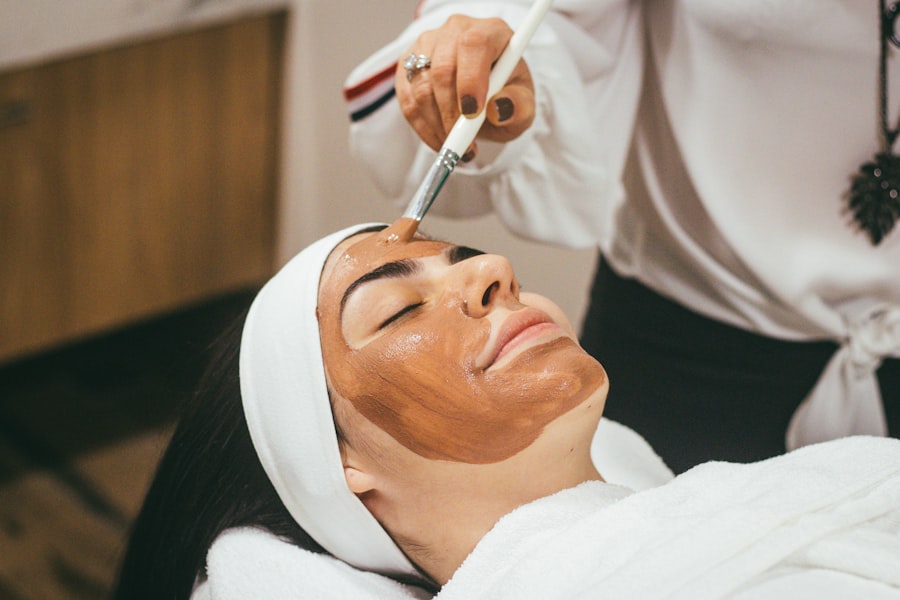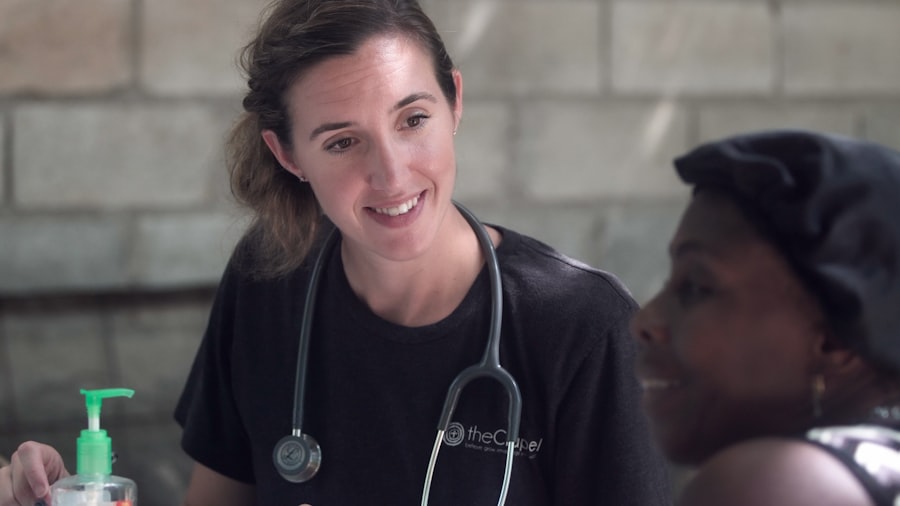Scars are a natural part of the healing process, forming when the skin repairs itself after an injury, surgery, or trauma. You may have noticed that scars can vary significantly in appearance, texture, and color. They can be flat, raised, or even indented, and their color can range from red or purple to white or brown, depending on various factors such as skin type, the severity of the injury, and your individual healing process.
Understanding the nature of scars is essential for anyone looking to improve their appearance or reduce their visibility. The formation of a scar begins when the body produces collagen to mend the damaged skin. This collagen can sometimes lead to an overproduction, resulting in raised scars known as hypertrophic or keloid scars.
Alternatively, if the skin heals too quickly, it may leave behind a depressed scar, often referred to as an atrophic scar. You might find that some scars fade over time while others remain prominent.
Key Takeaways
- Scars are a natural part of the body’s healing process and can vary in appearance depending on factors such as skin type and the cause of the injury.
- Laser treatment works by targeting the damaged skin cells and stimulating the production of new, healthy skin cells to improve the appearance of scars.
- Different types of scars, including acne scars, surgical scars, and traumatic scars, can be faded with laser treatment.
- Laser treatment has been found to be effective in reducing the appearance of scars, but multiple sessions may be required for optimal results.
- Risks and side effects of laser treatment for scars may include temporary redness, swelling, and changes in skin pigmentation, but these are usually mild and temporary.
How Laser Treatment Works
Laser treatment has emerged as a popular method for reducing the appearance of scars. The technology behind laser therapy involves using focused light beams to target specific areas of the skin. When you undergo laser treatment, the laser penetrates the skin’s surface, stimulating collagen production and promoting the growth of new, healthy skin cells.
This process can help to smooth out uneven textures and reduce discoloration associated with scars. There are different types of lasers used in scar treatment, including ablative and non-ablative lasers. Ablative lasers remove the outer layers of skin, allowing for significant resurfacing and rejuvenation.
Non-ablative lasers, on the other hand, work beneath the skin’s surface without damaging the outer layer. Depending on your specific scar type and skin condition, your dermatologist will recommend the most suitable laser treatment for you. Understanding how these lasers work can help you feel more informed and confident about your decision to pursue this option.
Types of Scars That Can Be Faded with Laser Treatment

Laser treatment is effective for various types of scars, making it a versatile option for many individuals seeking improvement in their skin’s appearance. One common type is hypertrophic scars, which are raised and often red or purple in color. These scars can develop after surgery or injury and may respond well to laser therapy that targets their texture and pigmentation.
If you have hypertrophic scars, you might find that laser treatment can significantly flatten and lighten them over time. Atrophic scars, such as those caused by acne or chickenpox, are another type that can benefit from laser treatment. These scars appear as depressions in the skin and can be challenging to treat with traditional methods.
Laser therapy can stimulate collagen production in the deeper layers of the skin, helping to fill in these indentations and create a smoother surface. If you’ve struggled with atrophic scars, you may discover that laser treatment offers a promising solution to enhance your skin’s overall appearance.
The Effectiveness of Laser Treatment on Scars
| Study | Sample Size | Success Rate | Side Effects |
|---|---|---|---|
| Smith et al. (2018) | 100 patients | 85% | Minor redness and swelling |
| Jones et al. (2019) | 150 patients | 92% | Temporary skin discoloration |
| Garcia et al. (2020) | 75 patients | 78% | Itching and dryness |
The effectiveness of laser treatment on scars can vary based on several factors, including the type of scar, your skin type, and how well you follow pre- and post-treatment care instructions. Many individuals report significant improvements in their scar appearance after undergoing laser therapy. In some cases, multiple sessions may be required to achieve optimal results.
You might find that after a series of treatments, your scars become less noticeable and blend more seamlessly with your surrounding skin. It’s important to have realistic expectations when considering laser treatment for scars. While many people experience positive outcomes, results can differ from person to person.
Some may see dramatic changes, while others might notice more subtle improvements. Consulting with a qualified dermatologist will help you understand what results you can expect based on your unique situation. This personalized approach ensures that you are well-informed about the potential benefits and limitations of laser therapy for your specific scars.
Risks and Side Effects of Laser Treatment for Scars
As with any medical procedure, there are risks and side effects associated with laser treatment for scars that you should be aware of before proceeding. Common side effects include redness, swelling, and discomfort in the treated area. These symptoms typically subside within a few days but can vary depending on the intensity of the treatment and your skin’s sensitivity.
You may also experience temporary changes in pigmentation, particularly if you have darker skin tones. In rare cases, more severe side effects can occur, such as scarring or infection at the treatment site. It’s crucial to discuss these risks with your dermatologist during your consultation so that you can make an informed decision about whether laser treatment is right for you.
By understanding both the potential benefits and risks involved, you can approach your treatment with greater confidence and peace of mind.
Preparing for Laser Treatment

Preparation is key to ensuring a successful outcome from your laser treatment for scars. Before your procedure, your dermatologist will likely conduct a thorough evaluation of your skin and discuss your medical history to determine if you are a suitable candidate for laser therapy. You may be advised to avoid certain medications or supplements that could increase bleeding or sensitivity before your treatment date.
In addition to medical considerations, there are practical steps you can take to prepare for your appointment. For instance, it’s advisable to avoid sun exposure for several weeks leading up to your treatment to minimize the risk of complications. You might also want to arrange for someone to accompany you on the day of your procedure, especially if you anticipate needing assistance afterward due to any discomfort or swelling.
Aftercare and Recovery from Laser Treatment
After undergoing laser treatment for scars, proper aftercare is essential for achieving the best possible results. Your dermatologist will provide specific instructions tailored to your needs, but general guidelines often include keeping the treated area clean and moisturized while avoiding sun exposure during the healing process. You may also be advised to use gentle skincare products that won’t irritate your sensitive skin.
Recovery times can vary depending on the type of laser used and the extent of your treatment. While some individuals may return to their normal activities within a few days, others might require more time for their skin to heal fully. During this period, it’s important to monitor your skin for any signs of infection or unusual reactions and report these to your dermatologist promptly.
By following aftercare instructions diligently, you can help ensure that your skin heals properly and that you achieve optimal results from your laser treatment.
Alternative Treatments for Fading Scars
If you’re considering options beyond laser treatment for fading scars, there are several alternative treatments available that may suit your needs better. Topical treatments containing ingredients like silicone gel or vitamin E have been shown to help improve scar appearance over time. These products work by hydrating the scar tissue and promoting healing from within.
Another option is microneedling, a procedure that involves using tiny needles to create micro-injuries in the skin’s surface. This stimulates collagen production and can improve both texture and tone in scarred areas. Chemical peels are also popular for treating superficial scars by exfoliating the outer layer of skin and promoting new cell growth underneath.
Ultimately, the best approach will depend on your individual circumstances and preferences. Consulting with a qualified dermatologist will help you explore all available options so that you can make an informed decision about how best to address your scars effectively. Whether you choose laser treatment or an alternative method, taking proactive steps toward improving your skin can lead to increased confidence and satisfaction with your appearance.
If you are interested in learning more about how laser treatments can help improve the appearance of scars, check out this informative article on In Laser Hair Removal’s blog. This article discusses the various types of scars that can be treated with laser therapy and provides valuable information on the process and expected results. It is a great resource for anyone considering laser treatment for scar reduction.
FAQs
What is laser scar treatment?
Laser scar treatment is a non-invasive procedure that uses focused light therapy to reduce the appearance of scars on the skin. The laser targets the damaged skin cells and stimulates the production of new, healthy skin cells to improve the overall texture and tone of the skin.
How does laser scar treatment work?
During laser scar treatment, the laser energy is delivered to the targeted area of the skin, where it is absorbed by the scar tissue. This stimulates the production of collagen and elastin, which helps to improve the appearance of the scar and promote skin regeneration.
What types of scars can be treated with laser therapy?
Laser scar treatment can be used to improve the appearance of various types of scars, including acne scars, surgical scars, and traumatic scars. It can also be effective for reducing the redness and pigmentation associated with scars.
Is laser scar treatment safe?
When performed by a qualified and experienced practitioner, laser scar treatment is generally considered safe. However, there are some potential risks and side effects, such as temporary redness, swelling, and changes in skin pigmentation. It is important to discuss the potential risks and benefits with a healthcare professional before undergoing treatment.
How many laser scar treatment sessions are needed to see results?
The number of laser scar treatment sessions needed to see results can vary depending on the size and severity of the scar, as well as the individual’s skin type and response to the treatment. In general, multiple sessions are usually required to achieve optimal results.
What are the potential benefits of laser scar treatment?
Laser scar treatment can help to improve the texture, tone, and overall appearance of the skin by reducing the visibility of scars. It can also help to minimize redness, pigmentation, and uneven skin tone associated with scars.
Are there any limitations to laser scar treatment?
Laser scar treatment may not be suitable for everyone, and there are certain limitations to consider. For example, individuals with certain skin conditions, such as active acne or eczema, may not be good candidates for laser scar treatment. It is important to consult with a healthcare professional to determine if laser scar treatment is appropriate for your specific needs.






